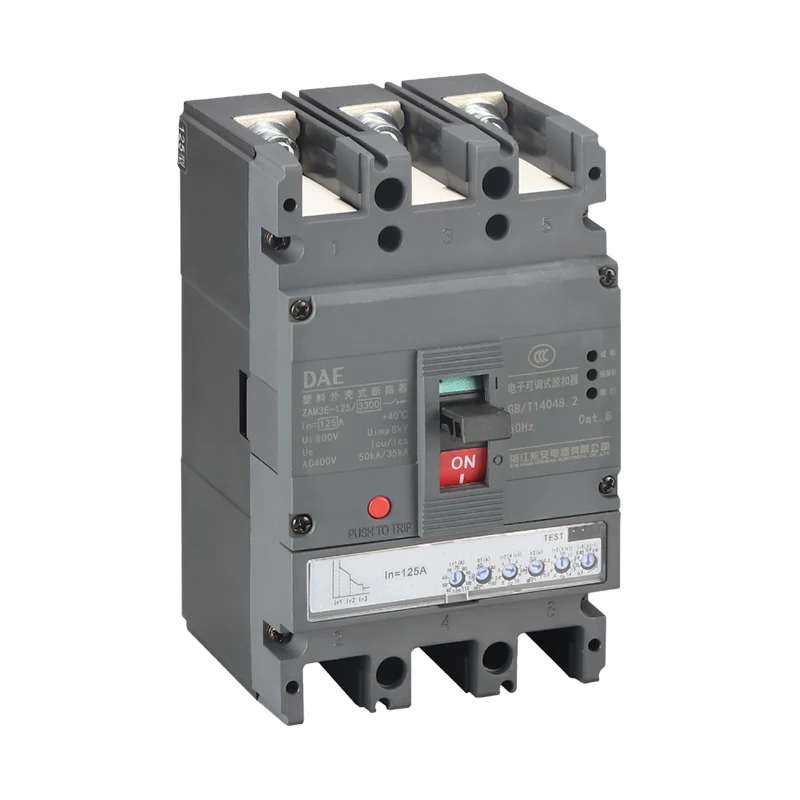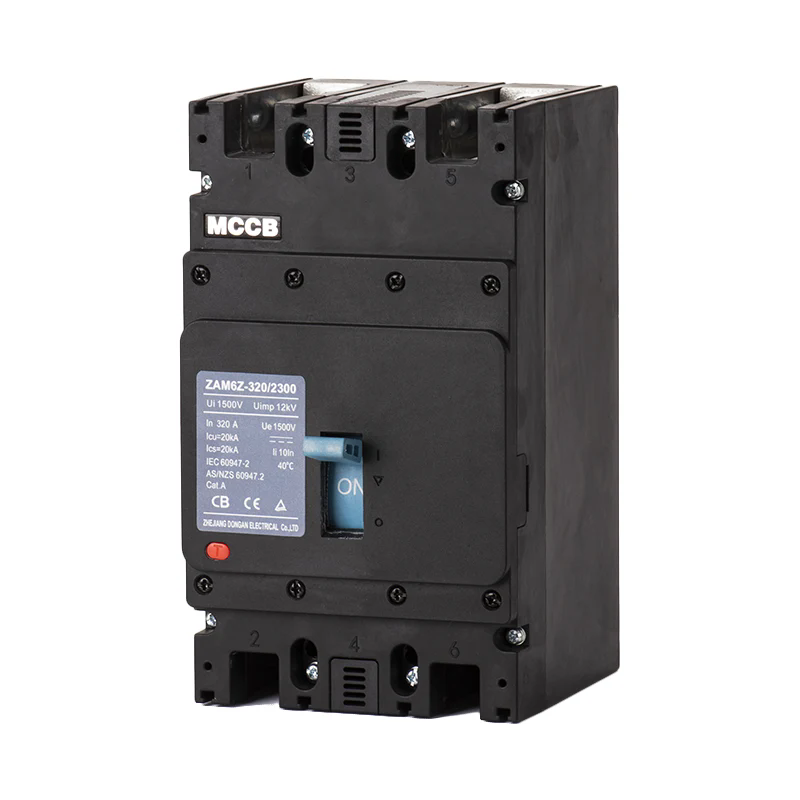Are molded case circuit breakers generally suitable for AC or DC?
2025-08-29
Molded case circuit breakers, also known as device-type circuit breakers, have all components sealed in a plastic casing. Auxiliary contacts, undervoltage releases, and shunt releases are often modular. Molded case circuit breakers automatically interrupt current when the current exceeds the trip setting. Zhejiang Dong'an Electric Co., Ltd. offers DC MCCBs and AC MCCBs of varying specifications. Let's take a look at them.

Design Purpose and Mainstream Applications of Molded Case Circuit Breakers
A molded case circuit breaker (MCCB) is an electrical device used for overload and short-circuit protection. Its core design is based on the characteristics of alternating current (AC), resulting in an AC MCCB. The reasons are as follows:
1. Arc extinguishing mechanism adaptability: AC current has periodic zero crossings, making arcs prone to natural extinguishing. The arc extinguishing chamber structure of a molded case circuit breaker is optimized for this characteristic.
2. Mainstream market demand: Over 90% of global power systems are powered by AC (referring to the IEC 60898 standard), so manufacturers prioritize developing AC-specific models. 3. Cost and Standardization: AC circuit breakers are manufactured on a large scale, are less expensive, and comply with general electrical standards (such as UL 489 and GB 14048.2).

Special Features of DC Applications and Improvement Solutions
Although molded case circuit breakers are primarily designed for AC applications, they can be adapted for DC applications, or DC MCCBs, through the following improvements:
1. Enhanced Arc Extinguishing Capacity: DC arcs have no natural zero crossing, requiring magnetic arc extinguishing or segmented grid designs. For example, ABB's Tmax DC series can interrupt DC circuits rated up to 750V.
2. Polarity Marking and Breaking Capacity: DC circuit breakers require clearly marked positive and negative terminals, and their breaking capacity is generally lower than that of comparable AC models.
3. Typical Application Scenarios:
- Photovoltaic power generation systems (DC 1000V and below)
- Rail transit (DC 1500V traction power supply)
- Energy storage battery protection (such as CATL's dedicated DC MCCBs for energy storage cabinets).
Key Selection Parameters and Considerations
Users should compare the following indicators based on their actual needs:
1. Voltage level: AC 400V/690V vs. DC 250V/750V (common industrial standards).
2. Interrupting capacity: The interrupting capacity of a DC MCCB is typically 50%-60% of that of an AC MCCB.




